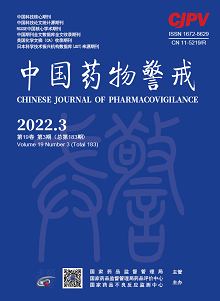|
|
Gender differences in adverse reactions in high-dose glucocorticoids in mice
WEI Kezhao, WU Huan, ZHANG Zixu, FENG Jiahua, GAO Jianping
2022, 19(3):
248-251.
DOI: 10.19803/j.1672-8629.2022.03.04
Objective To study the effects of high-dose glucocorticoid on the general condition, immune organs and endocrine system in mice of different sexes. Methods Male and female mice were randomly divided into control group and cortisol group (50 mg·kg-1 each time, 2 times/d), and were intramuscularly injected with saline or cortisol for 14 days, respectively. The body weight was measured once every 3 days throughout the experiment, and the body temperature, voluntary activity times and swimming time after 7 days off the medication were measured. After 9 days off the medication, blood samples were taken, immune organs and sexual organs were separated and weighed and then their indexes were calculated, MDA content was measured by TBA method, and SOD activity was measured by hydroxylamine method, estradiol level in female mice and testosterone level in male mice were measured by ELISA methods in serum. Results Compared with the control group, the weight of mice was significantly lower from the fourth day of intramuscular cortisol (P<0.05 or P<0.01), the male mice lost more weight than the female mice, and the weight of the male group did not recover after drug withdrawal of the cortisol group. The time of swimming and times of voluntary movement were significantly decreased (P<0.05), the spleen mass and its index, testis index of male mice were significantly increased (P<0.05 or P<0.01), the thymus mass and its index, epididymis and prostate mass and index were significantly decreased (P<0.05 or P<0.01), the adrenal gland and seminal vesicle were not significantly changed of male mice in the cortisol group. The ovary mass and its index were significantly decreased (P<0.05), the mass and index of spleen, thymus, adrenal gland and uterus were not significantly changed of female mice in the cortisol group. The level of serum testosterone in male mice and estradiol in female mice were slightly decreased by cortisol, but there was no significant difference between them. Conclusion After long-term high dose administration in mice, cortisol can affect the general condition of mice, cause abnormal immune and endocrine organs, and have a tendency to reduce the secretion of sex hormones, especially in male mice.
References |
Related Articles |
Metrics
|

